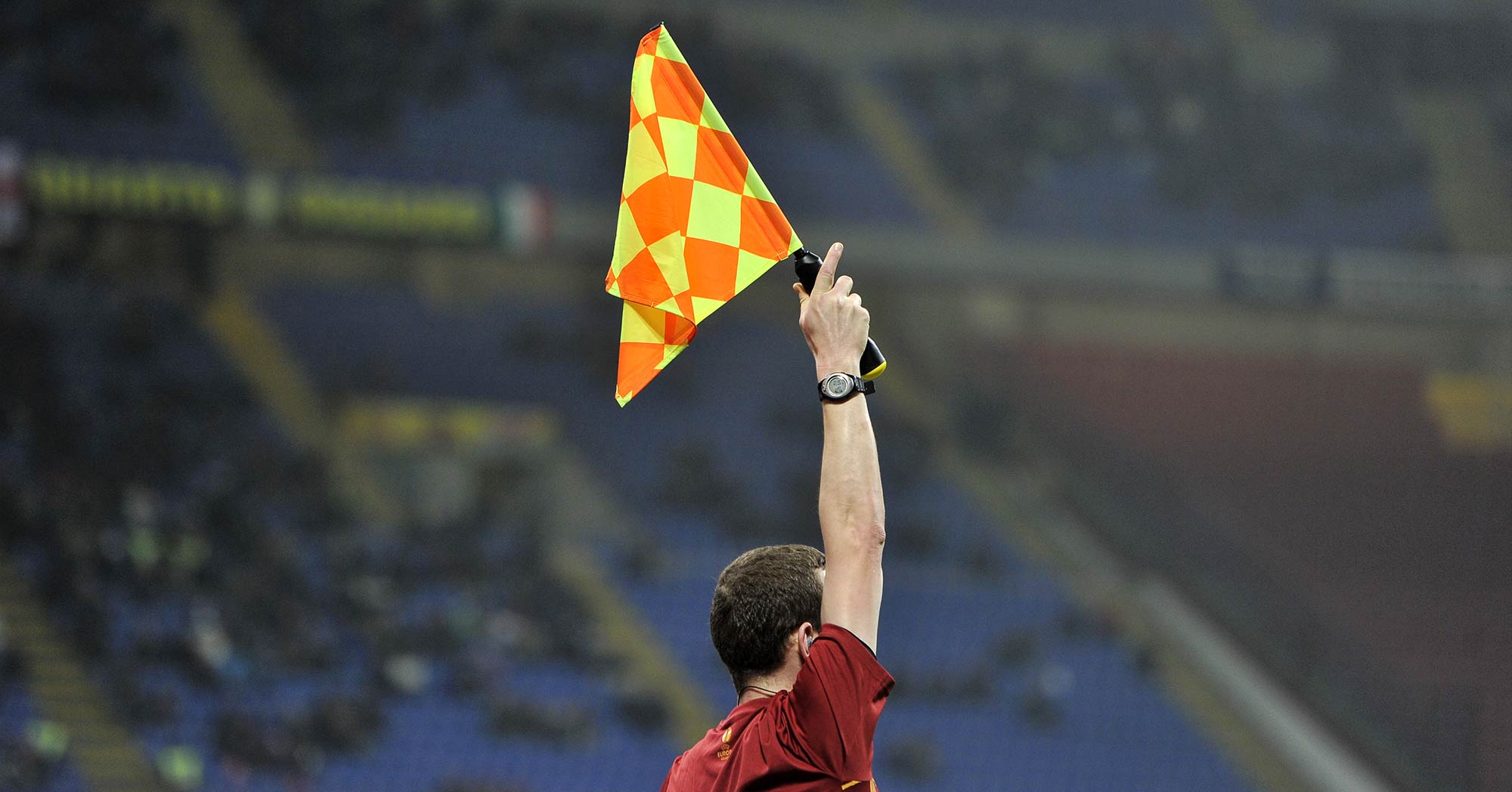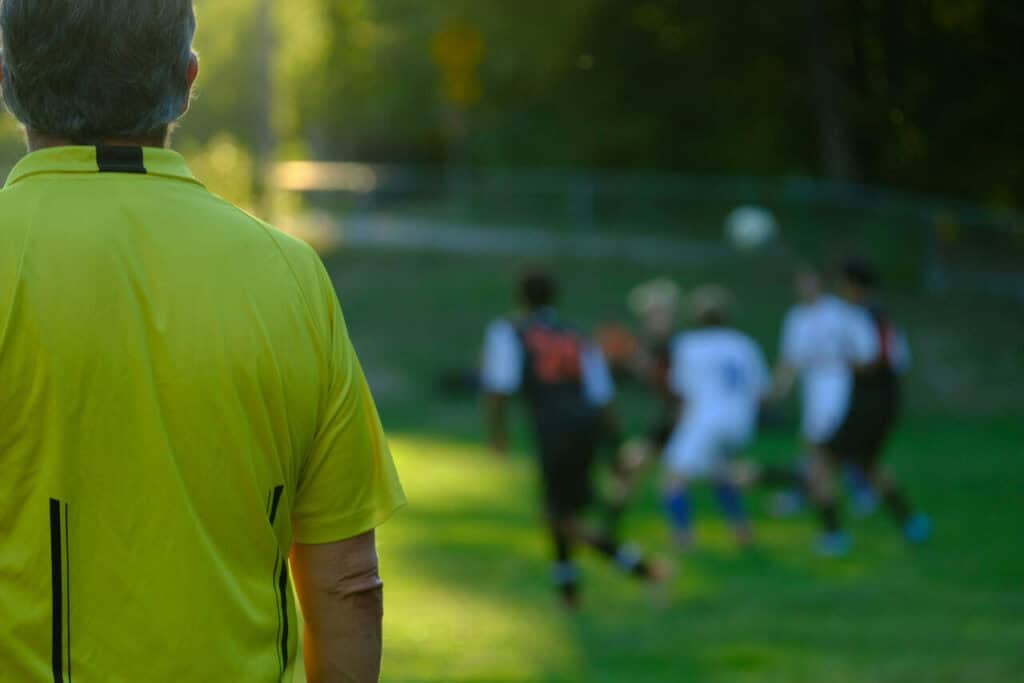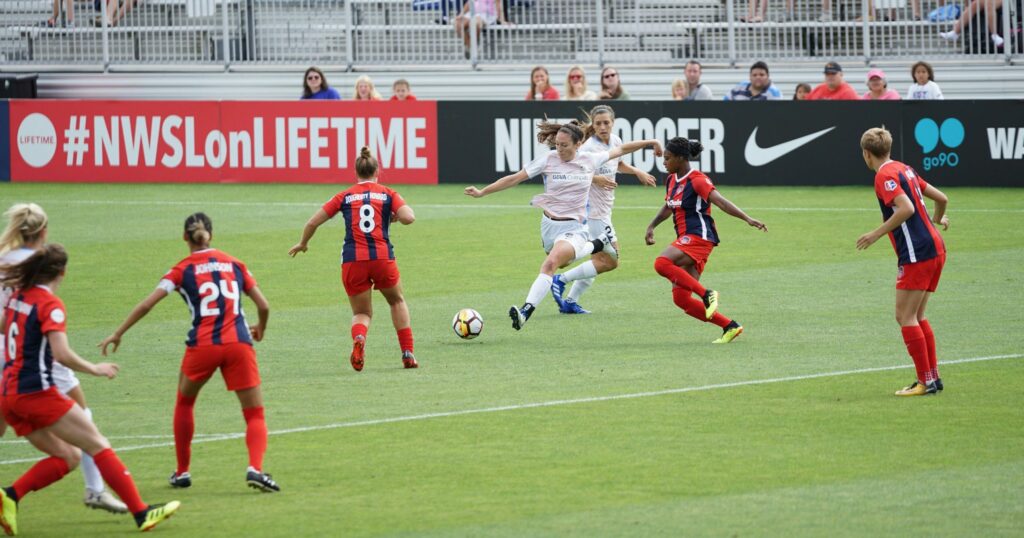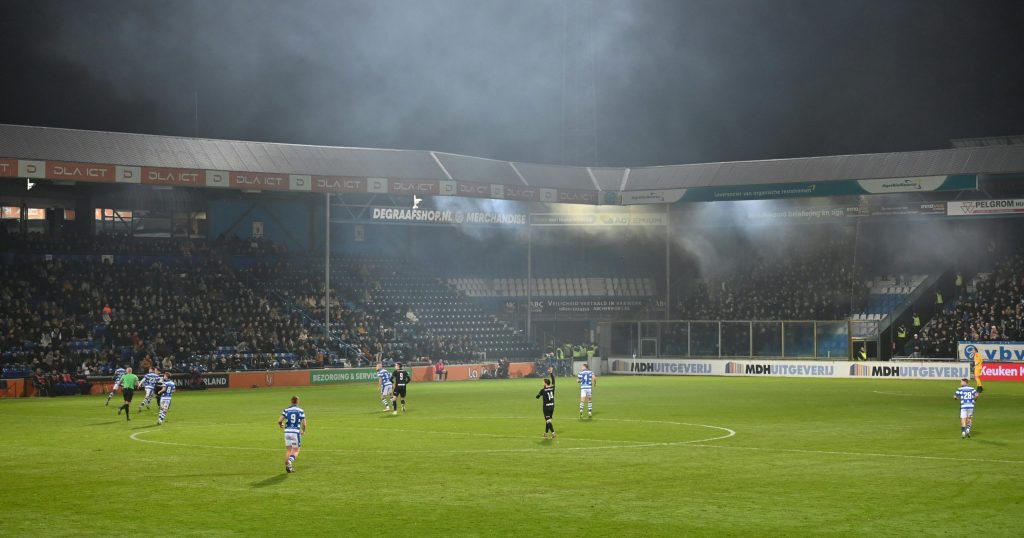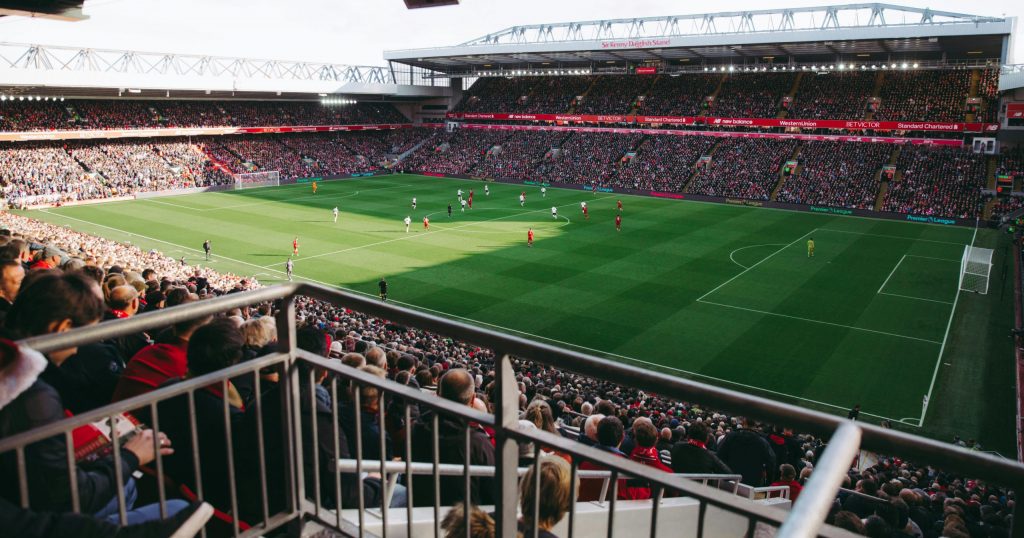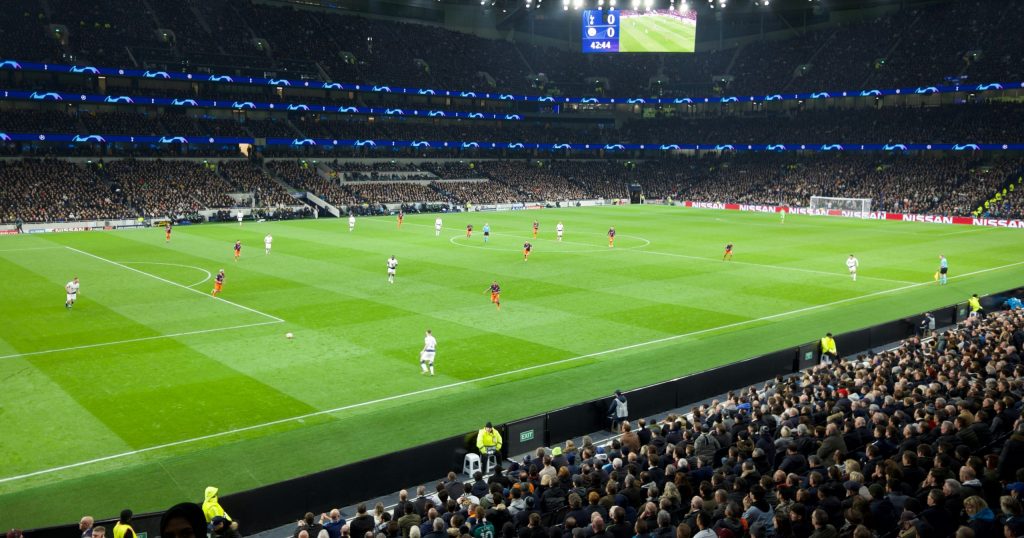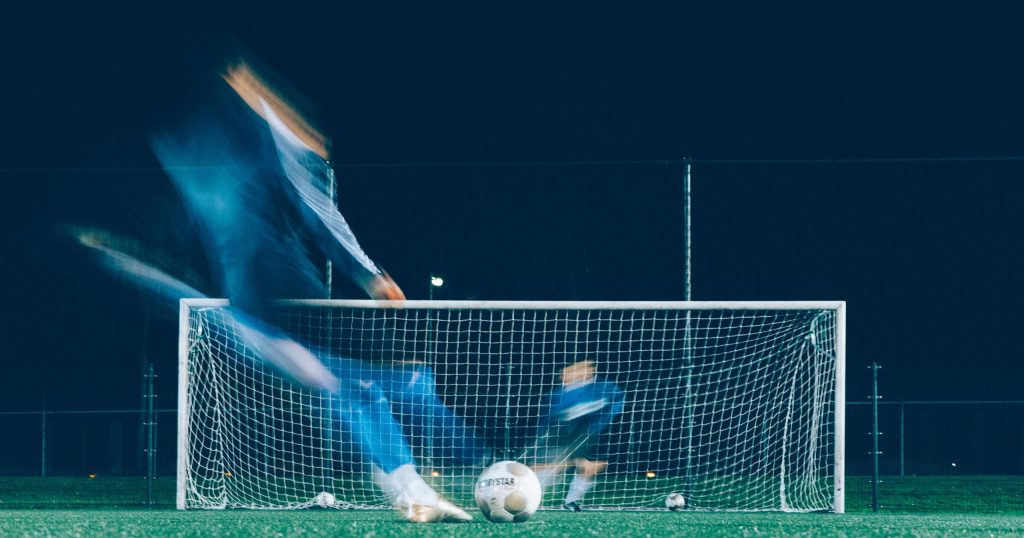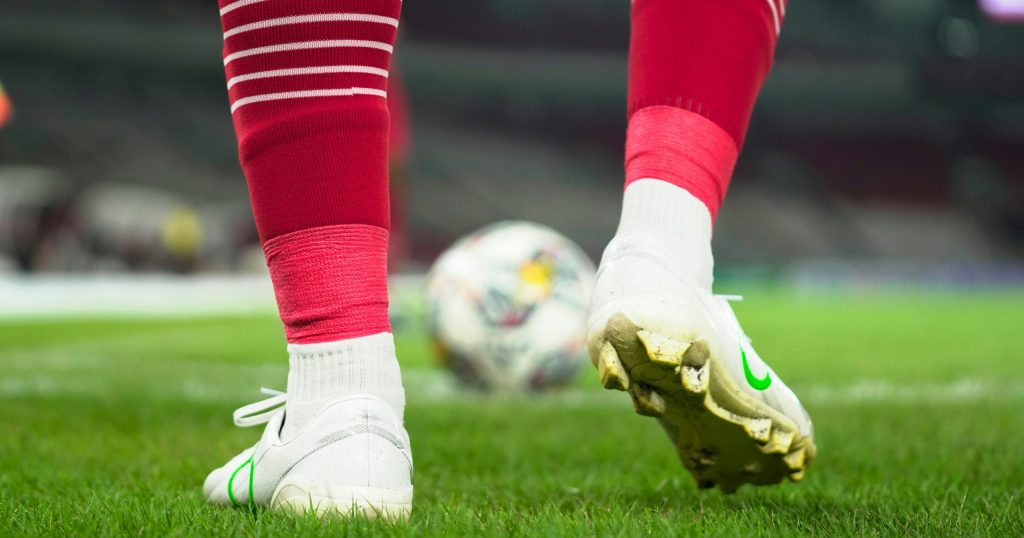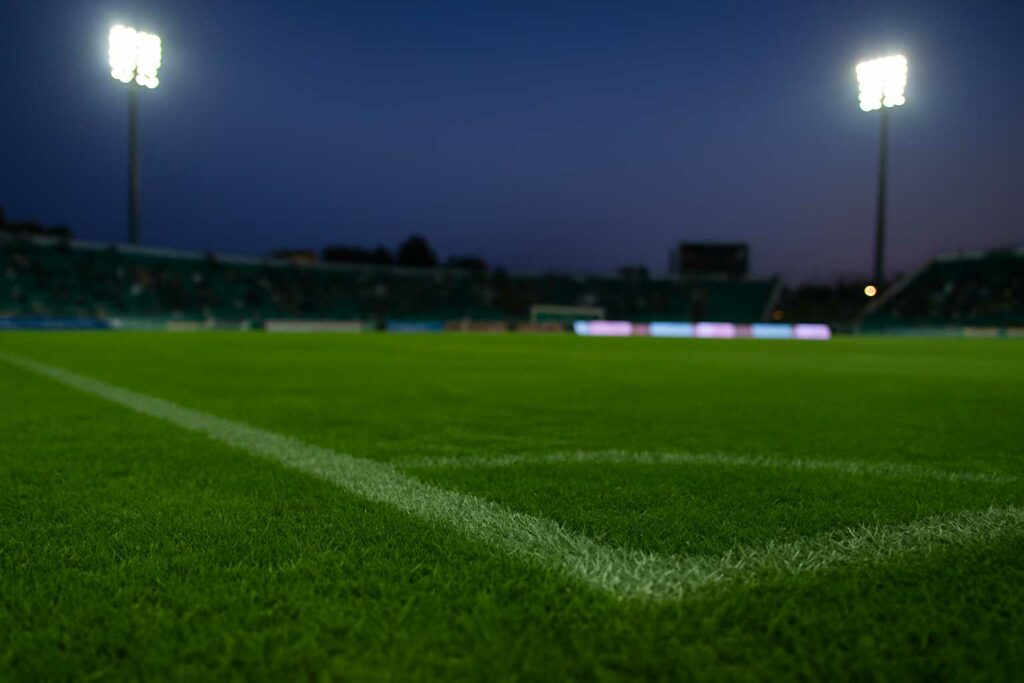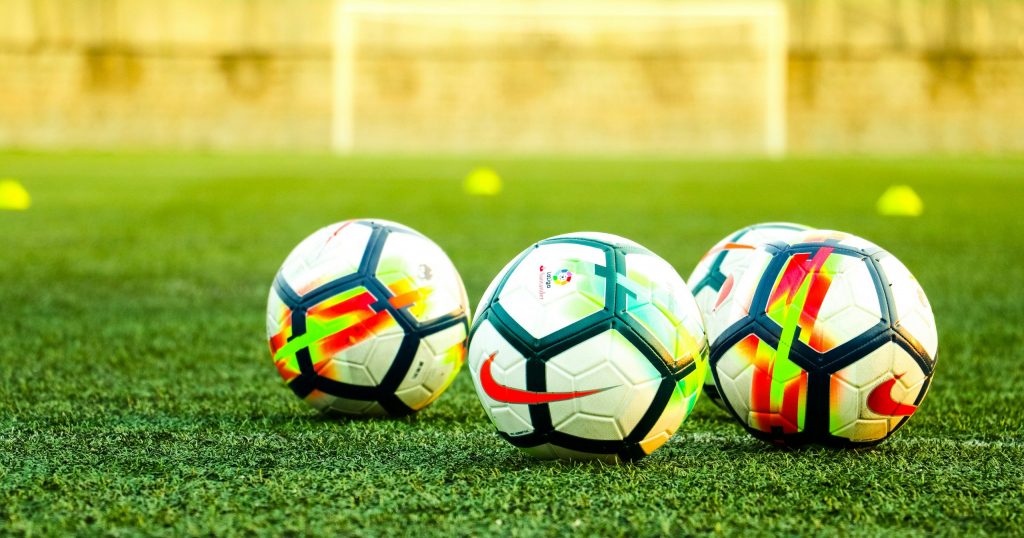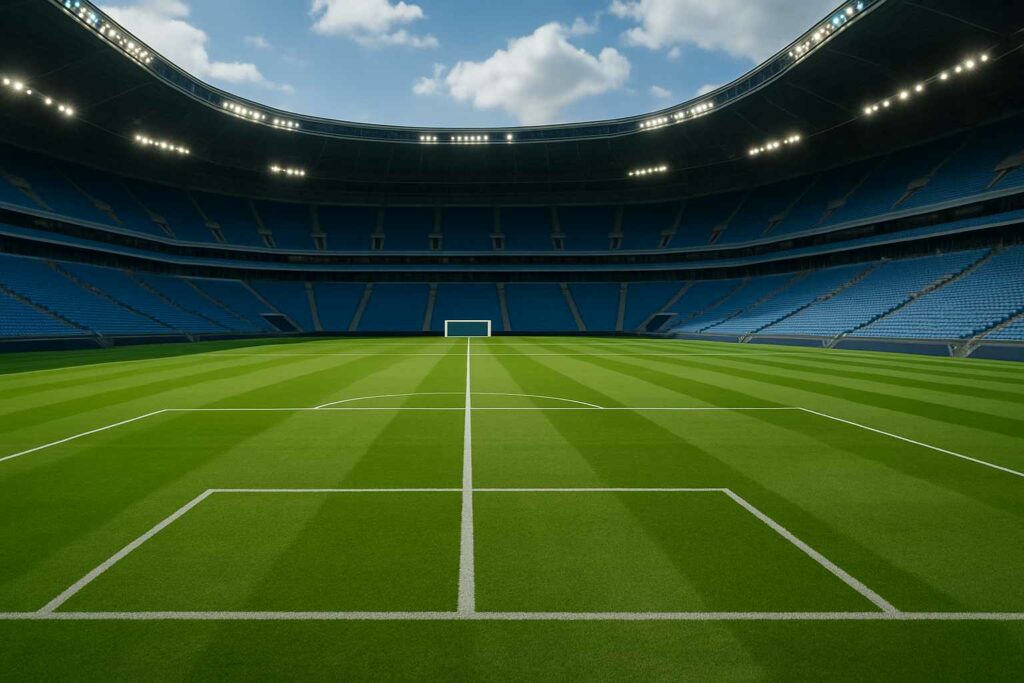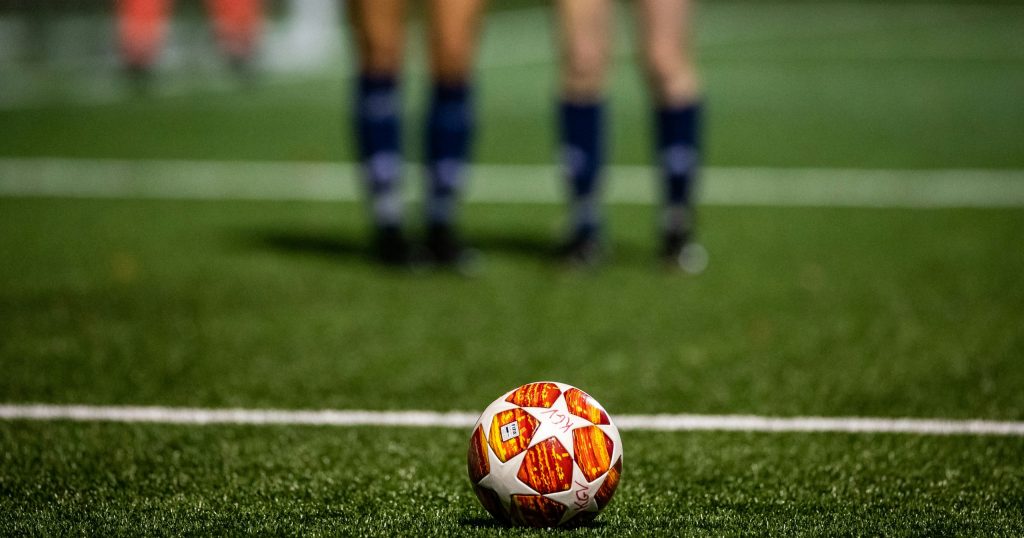Football Game Rules
The current football game rules are made up of 17 distinct points, which are further discussed below. The UEFA Champions League, UEFA Europa League, and other top-tier football championships stick to these rules.
1. Football Field.
The playing field surface can be completely natural or, if specified in the match regulations, completely artificial. There is one exception: the match regulations may include a point that allows a combination of natural and artificial surfaces for football matches.
Football field dimensions: The regulations allow for games to be played in stadiums of various sizes, but there are some restrictions: the minimum and maximum field length can range from 90 m to 120 m, and the width can range from 45 m to 90 m. These dimensions appear in international competitions as follows: length (100 and 110 m), width (minimum – 64, maximum – 75 meters).
The penalty area is 16.5 meters long from the goal line, and the goalkeeper’s area is 5.5 meters wide and 18.32 meters long. The penalty spot is 11 meters away from the goal center.
2. Football Ball.
The main playing tool must meet the following criteria:
– be spherical (round);
– be made of suitable material;
– the circumference of the ball must be between 68-70 cm;
– the weight of the ball before the match must be between 410-450 g;
– the pressure inside the ball must be 0.6-1.1 atmospheres at sea level.
Additional balls that meet the above criteria are used around the field without the intervention of the match referee. If the ball becomes unsuitable for use, the game is stopped, and the game is restarted with a contested ball in the same location where it became unsuitable.
3. Number of Players.
Matches begin with two teams, each with 11 players on the field, including goalkeepers. When one of the teams has fewer than seven players on the field, the game is stopped and not resumed.
During football matches, substitutions are permitted. The number of substitutions is determined by the number of substitutions allowed in the match regulations. This number was three before the pandemic, but some leagues have changed their rules to allow coaches to substitute up to five players during a match.
Goalkeeper substitutions are also allowed: any player can replace the goalkeeper if: 1) the referee is informed before the substitution; 2) the substitution is made while the game is paused.
4. Football Player Attire.
Football players are required to wear: jerseys with sleeves (short or long), shorts, protective gear, and footwear. Players are not permitted to use or wear dangerous equipment or clothing. Jewelry (necklaces, rings, bracelets, earrings, leather or rubber bands, etc.) is not permitted and must be removed prior to entering the field.
5. Football Referee.
The referee’s main responsibilities during the game are to ensure that the rules are followed, to control the match with the referee team (assistant referees, reserve referees, and additional assistant referees), and to decide when the game must be stopped and restarted.
The referee’s equipment during the match includes: whistle, watch, yellow and red cards, notebook.
6. Assistant Referee.
The assistant referee’s primary function is to signal offside, but they also assist the main referee by signaling incidents such as fouls committed on the field of players, the transfer of control of the ball to one or the other team when it leaves the boundaries of the field, and the awarding of a corner kick or a goal kick.
7. Game Duration.
Football game consists of two 45-minute halves and a referee, and the referee adds compensatory time for game interruptions, usually 1-5 minutes per half. The halftime break lasts 15 minutes, and if more time is required, two additional 15-minute halves are played.
8. Game Start and Extra Time.
At the start of the game, lots are drawn, and the winning team chooses which goal to attack in the first half, while the losing team begins the match. The game kicks off with a kick from the center circle. Teams switch sides in the second half, and the team that kicked off first attacks the opposing goal. The team that conceded the goal takes the first kick after scoring a goal.
All players must be in their own half during each kick-off, and defending players must be at least 9.15 meters away from the ball until it is in play. When the referee gives the signal and the ball moves onto the field with a clear hit, the ball is considered returned to play.
9. Game Technique.
To start official football matches, you need: a field that meets the regulations, the main tool – a football ball, a team of referees, and two prepared teams.
10. Goal.
A goal is counted if the ball completely crosses the goal line between the goalposts and under the crossbar, provided that the team that scored the goal had not previously committed any offense or foul and that the goal was scored legally according to football rules. If the referee signals before the ball crosses the goal line, the goal is not counted, and the game is restarted with a contested ball.
11. Offside.
This is most likely the most complex moment described by soccer rules. Offside is a rule whose main purpose is to prevent attacking team players from being closer to the goal than the opposing team’s last defending player. The game is stopped and the ball is given to the defending team if any part of the attacking player’s body (head, body, foot or leg) is on the opponents’ side of the field (the halfway line is not included in the concept of “opponents’ side of the field”) and they are closer to the opponents’ goal line than the ball and the opposing team’s second-to-last player.
An offside position is recorded when a player actively participates in the game by: 1) playing or touching the ball received from a teammate, 2) engaging in a battle for the ball with an opponent, 3) being in an offside position, even if they do not touch the ball, obstructing the field of vision and/or interfering with the opponent’s goalkeeper during a shot.
12. Rule Violations and Fouls.
Unsportsmanlike behavior, pushing, hitting the leg, and all physical actions against opponents are prohibited, and such actions result in a foul violation. Even when there is no contact, the rules are broken, however, if the action is dangerous, it is referred to as a dangerous play. If contact had occurred, the situation could have resulted in more serious injuries.
The referee has the authority to issue yellow or red cards for these types of fouls. A player is sent off the field after receiving two yellow cards or a direct red card, and the team plays with one fewer player. A yellow card can also be shown for time-wasting and unsporting behavior, such as taking off the shirt or kicking off the corner post.
13. Free Kick.
After awarding a free kick, the referee must signal by raising their arm above their head. It is held until the kick is taken and it has been touched by another player or the ball has left the field.
If the referee does not indicate that it is a free kick and the ball is kicked directly into the goal, the goal is not counted and the kick is retaken. Except when the referee signals for a free kick and the kick goes into the goal, a goal kick is awarded. If the ball enters its own goal after a free kick, the goal is not counted, and a corner kick is awarded.
14. Penalty Kick.
If a defending player commits an offense that results in a foul inside their penalty area, the attacking team is awarded a penalty kick from 11 meters. It is also given for a handball. However, if the hand is in a natural position and/or the trajectory of the ball was away from the goal, not towards it, and the player unintentionally touches the ball with their hand, this is not considered an offense. This is commonly referred to as the ball finding the hand, and no penalty kick is awarded.
The goalkeeper cannot cross the goal line during the penalty kick, otherwise, the penalty kick is retaken. During the kick, one of the goalkeeper’s feet must be on the goal line.
15. Throw-In.
The player throwing the ball must face the field, have both feet on or behind the touchline, and throw the ball with both hands from behind or above their head, from the spot where the ball left the field.
16. Goal Kick.
A goal kick is awarded when the ball crosses the goal line beyond the goalposts after the last touch of an attacking player but no goal is scored. The ball must remain stationary when taking a goal kick. The kick can be taken by any defending player on the team from any position inside the goalkeeper’s penalty area. Opponents must remain outside the penalty area until the ball is in play.
17. Corner Kick.
A corner kick is awarded when the ball is kicked off the field by a defender and crosses the sideline of the goal without being scored. A goal is scored if the ball crosses the goal line and is in play during the corner kick, even if no other player on the field touches it. The ball must be placed within the corner arc during the corner kick, and the corner flag must not be moved or touched. When a player from the attacking team kicks the ball and clearly moves it from its position, it is considered in play.
F.A.Q
What is offside in football?
A player is in an offside position if: any part of their body (head, body, foot or leg) is on the opponents’ side of the field (the halfway line is not included in the concept of “opponents’ side of the field”) and they are closer to the opponents’ goal line than the ball and the opposing team’s second-to-last player.
What are the dimensions of football goals?
Football goals are – 7.32 meters wide and 2.44 meters high.
How long do football matches last?
Football matches consist of two halves of 45 minutes each, plus additional time added by the referee for stoppages during the match, typically 2-5 minutes per half. Halftime break lasts – 15 minutes.
What is the size of a football field?
In international A-class matches, the standard football field size is 105 meters in length and 69 meters in width.
What are the official football game rules?
Official football rules are described above, but each sports league and championship has their own website outlining specific game regulations with minor variations that they follow.
Learn more about other games
We also invite to learn more – about the rules of American football, darts. And for those who like board games we invite you to learn the rules of Texas Hold’em poker, checkers and roulette, dominoes.

